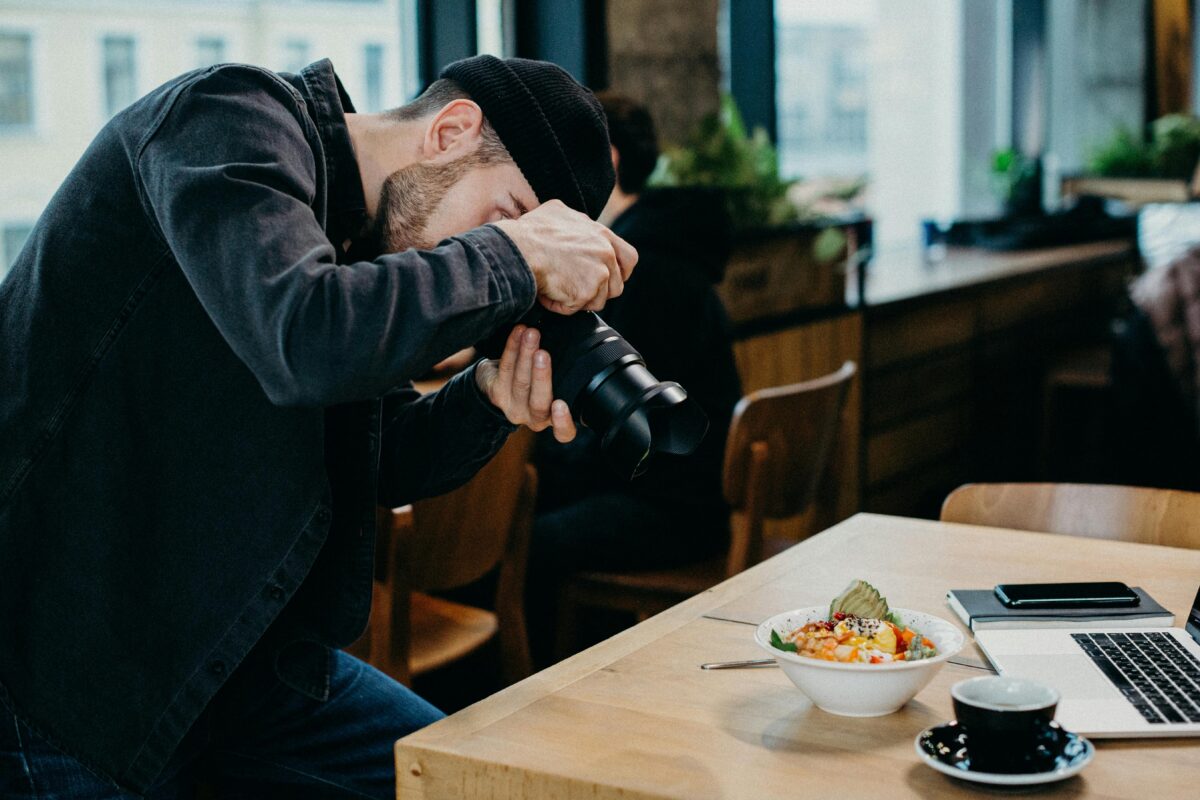In today’s era, where visual content reigns supreme, online quality photography has become an asset for businesses across various sectors. The food industry, in particular, greatly benefits from images that help entice potential customers and showcase delectable creations. However, achieving food photographs poses its set of challenges. In this blog, we’ll explore the hurdles faced by food photographers and the gratifying outcomes of capturing appetizing visuals.
The Significance of Top notch Food Photography

Before delving into the complexities and rewards, let’s first understand why top-tier professional food photography holds importance for businesses operating in today’s competitive market. With the prevalence of media and online platforms, many customers now rely on stimuli – such as restaurant websites, social media posts, and review sites – to make informed dining decisions.
1. Building a Unique Brand Identity
For any business within the food sector, crafted food photography plays a role in establishing a distinct brand identity. Compelling visuals create an aesthetic that can be seamlessly integrated across platforms, harmonising menus, promotional materials, websites and social media initiatives.
2. Fostering Engagement and Connection
Food images possess the ability to capture viewers’ attention and evoke emotions even before they savour their bite! When businesses select captivating photos that accentuate the aspects of dishes or display plating styles, they can boost interaction with audiences across various platforms.
3. Creating Interest
They say we eat with our eyes first! By sharing images of mouthwatering dishes or delightful desserts crafted by chefs or bakers at your place, you can capture interest and spark cravings in potential customers.
The Struggles Faced by Professional Food Photographers
Despite the allure of being surrounded by enticing aromas and savouring meals while capturing pictures all day, professional food photographers encounter several unique challenges in their field;
1. Time Constraints
In kitchens and lively dining settings, professional food photographers have limited time to set up their gear, frame the shot and establish ideal lighting conditions. They must blend creativity with efficiency to meet deadlines while upholding image quality.
2. Food Presentation
While chefs excel at crafting dishes bursting with flavour and creating appealing plates, photography demands a different expertise. Professional food photographers must collaborate closely with chefs or food stylists to present dishes in the best manner possible, balancing aesthetics with conveying taste and texture.
3. Maintaining Consistency in Food Photography
When it comes to food photography, it’s essential to ensure that the photos reflect the brand’s identity while highlighting the features of each dish. It can be quite a task to maintain consistency in how the shots are composed, lit and edited across projects, especially when dealing with a wide range of foods, settings and culinary styles.
4. Managing Props and Extras
Selecting the props plays a role in food photography as they help enhance different aspects of a dish. However, it’s important to choose props that strike a balance between showcasing the dish and not overshadowing it. This requires attention to detail.
The Benefits of Professional Food Photography
Despite the challenges involved, professional food photographers reap rewards from their work:
1. Preserving Culinary Artistry
By capturing plated dishes or arranged ingredients, professional food photographers immortalise culinary creations through stunning images that can be admired long after meals are over. By preserving this record of gastronomy on digital platforms or in print media, audiences from near and far can appreciate outstanding culinary talent.
2. Boosting Online Presence for Businesses
executed food photographs enhance platforms such as websites and social media accounts by turning them into visually appealing spaces that attract audiences closer to physical establishments or encourage online orders.
3. Establishing Trust with Customers
Using elements like imagery plays a role in building credibility for restaurants showcasing their unique culinary styles, be it elegant fine dining or vibrant street food experiences. Customers who are exposed to enticing food images tend to develop a sense of trust, fostering connections between eateries and their patrons.
Summary
The demand for professional food photography has surged in the food industry landscape. Overcoming challenges such as time limitations, food styling requirements, maintaining consistency and managing props, these talented photographers make a lasting impact on the world of culinary arts. The benefits they bring—ranging from enhancing businesses’ online visibility to establishing trust among customers—add value to their craft and make it truly rewarding.
